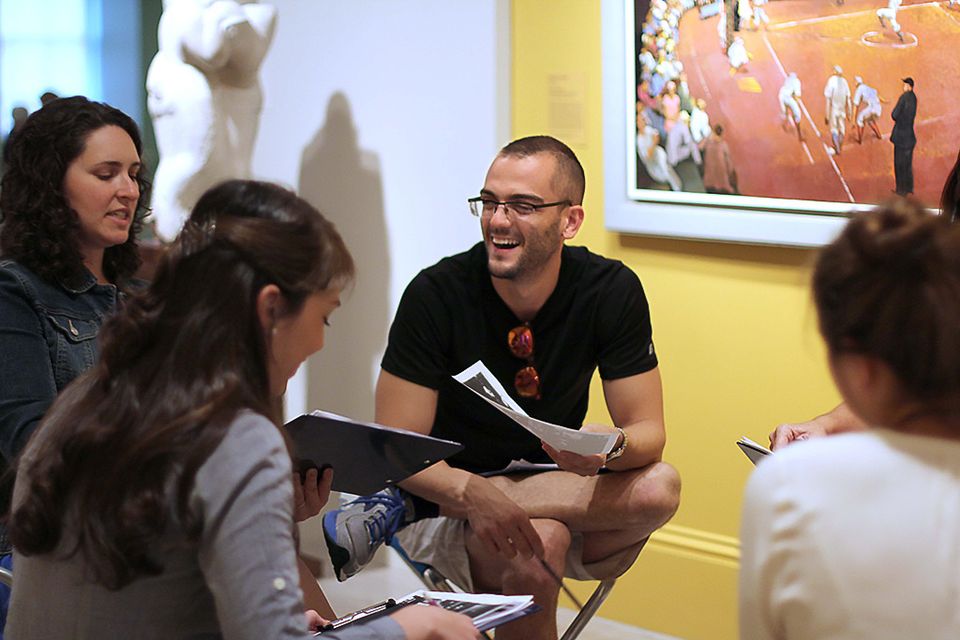

Michael Hristakopoulos teaches high school social studies at a virtual school in Florida. This July, he participated in one of SAAM's summer teacher institutes, offered for English and social studies teachers interested in integrating American art into their curricula. This summer, 59 teachers from 22 states and Washington, D.C., participated in one of two week-long sessions. Michael fills us in on how he applied his experience here to his online teaching environment.
Visual art can be understood as an expression of the human experience. A reflection of our history, culture, and ideas over time, art has relevance to every area of study. In an era when many schools are struggling to keep their art programs alive, educators across all disciplines must be proactive about integrating art into their courses. And I am a strong advocate for the value of art in the social studies classroom. Taking time to examine artwork in class has the potential to bring classroom content to life, helping students think critically, make interdisciplinary connections, and find relevance to their own lives.
It was this type of interdisciplinary eye-opening that was my goal when I had students in my online American government class review Edward Hopper's taut, mysterious Cape Cod Morning. I had the pleasure of examining this work closely as a participant in one of the Smithsonian American Art Museum's week-long summer teacher institutes this July. And its subject matter naturally provokes relevant questions for a class of high school government students: Where do American women find themselves in 1950, at the time this painting was completed? What seems to be Hopper's message about women and the wider society? How can we read Cape Cod Morning as a precursor to the changes soon to come for American women? What about loneliness? Does Hopper's subject exalt modern life or critique it? This painting offers myriad points of departure for a discussion with any class, and I would argue that many paintings present the same opportunity for those who simply take time to look.
My classes, along with a rapidly growing number in our public school system, are taught online. Even more traditional classrooms are often incorporating online meeting spaces or digital content. Thanks to the efforts of museums like SAAM, incorporating artwork and museum resources is easier than ever. High resolution images, thoughtful criticism, and pre-made lesson plans broken down by subject and content area streamline integration of art into online platforms as well as traditional classrooms. My own short lesson on Cape Cod Morning, for example, is accessible as a collection on the Smithsonian's Learning Lab, along with hundreds more collections created by teachers and museum professionals.
In my online government class I chose to place Hopper's painting outside of the formal flow of lesson content, but still within the conceptual "learning space" of the class. My course is administered through the popular Canvas learning management system, and uses a feature called "Announcements," which allows the instructor to make a posting that is seen by every student at their next login. Students logging in can get their thoughts flowing simply by clicking on an image such as Cape Cod Morning, and answering a few provocative questions about how it could relate to lesson content. In order to keep their responses organized, I use a simple and editable online survey through Google Forms which enables me to view student responses in a spreadsheet, and review their reflections on the painting I have chosen.
Teachers in any number of other contexts could just as easily incorporate art into their curriculum. Just like art itself, the possibilities for digitized content and online applications are endlessly flexible. As educators, we owe it to students to ensure the arts and humanities remain part of their education, whether learning takes place online or in person. Institutions like SAAM offer a multitude of resources to help educators do this; but the final responsibility is with us to keep art alive for our students.



















